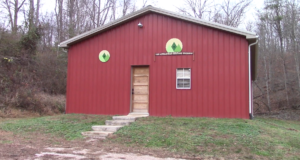Horsin’ Around – Woodworking
JerillV2021-09-29T14:40:12+00:00Like most woodworkers, I get requests to build something in a hurry and without spending a lot of money on supplies. Most of the time I schedule the work but this request was from someone special. The client, my wife, wanted a mobile horse tack chest to give as a Christmas gift. Together, we designed this piece to suit the needs of the gift recipient. Since sheet goods are expensive, I decided to use some poplar that I obtained at a modest price from a mill because it had not been cut to specification (13/16″ thick – rough – after drying).
To build something quickly I decided to use pocket hole joinery so the obvious solution was the Kreg Jig. Because the wood dimensioned out at 5/8″ thick, the Kreg Jig easily adjusted to this thickness since this tool can be adjusted in 1/8″ increments. Although the chest is large and heavy, I have faith that the pocket hole joinery will withstand the issues of transportation. The chest is designed to store two saddles, multiple bridles, lead ropes, tack cleaning supplies, horse cleaning supplies, and grooming supplies for the rider.
Because this is a functional piece that will be used in rugged conditions, visibility of the pocket holes are not an issue. By turning a maple handle that I installed on the back and placing wheels on the bottom, this chest can be moved like a dolly. This makes the chest easy to transport to a horse show and roll to the horse stall.
The Kreg Jig is a very useful tool that has a place in your shop or tool box. Do you own a Kreg Jig? What have you built with this versatile tool? The next time you use pocket hole joinery give the Kreg Jig a test run.
Enjoy your shop time,
Jerill







